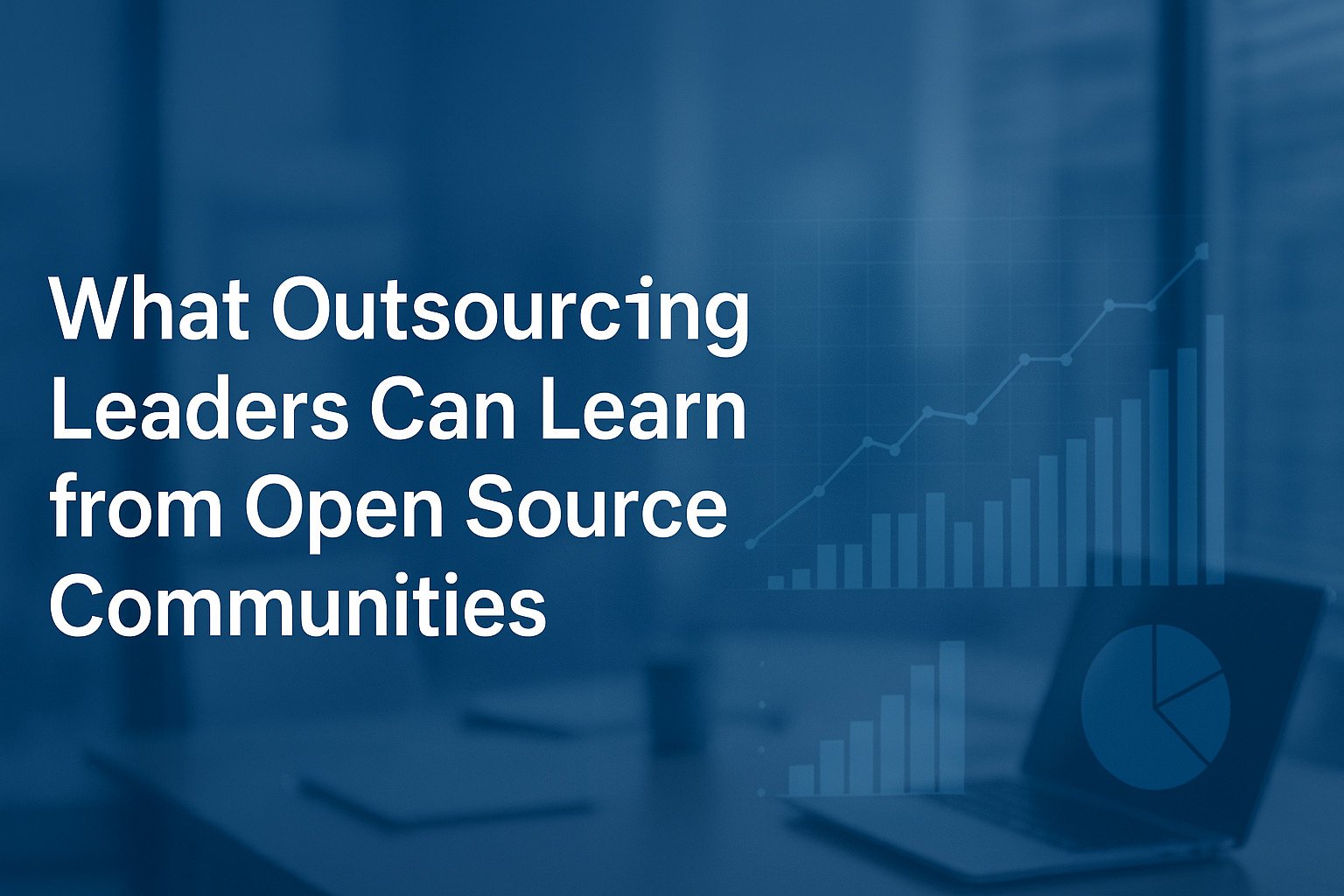What Outsourcing Leaders Can Learn from Open Source Communities
- 1 min read
Discover how outsourcing leaders can adopt open source principles to drive collaboration, innovation, and delivery efficiency.

Introduction
The rise of open source communities has transformed how modern software is built, maintained, and scaled. These communities operate across borders and time zones, yet they consistently deliver some of the world’s most reliable and secure technologies.
For outsourcing leaders, the question is simple: What makes open source ecosystems so resilient, productive, and innovative? Understanding these mechanics can significantly enhance how companies manage distributed teams and tech partnerships.
In today’s competitive IT landscape, organizations that adopt transparent collaboration models, modular workflows, and community-driven governance gain an immediate strategic advantage. These elements align closely with the way Euro IT Sourcing observes engineering teams operate across Europe.
The Challenge: Complex Collaboration Across Distributed Teams
Modern outsourcing partners often face similar problems:
- Misaligned communication between client and development teams
- Slower decision making due to unclear ownership
- Bottlenecks caused by limited documentation
- Difficulty maintaining quality across distributed developers
- Fragmented tooling or non-standardized workflows
These issues scale quickly in teams operating remotely. Interestingly, open source communities have solved these challenges for decades through transparent and highly structured collaboration practices.

The Approach: What Makes Open Source Teams Work
Open source ecosystems rely on a few core principles that outsourcing leaders can replicate.
1. Transparent Decision Making
Open source development thrives on visible:
- Issue discussions
- Roadmaps
- Code reviews
- Contribution policies
This transparency removes ambiguity, increases trust, and accelerates feedback loops.
2. Documentation First
Every major open source project uses:
- Clear READMEs
- Contribution guidelines
- Architecture explanations
Strong documentation minimizes onboarding time, reduces dependency on individuals, and creates continuity across contributors.
3. Modular Architecture
Open source software emphasizes:
- Clean separation of responsibilities
- Isolated components
- Reusable modules
This makes distributed work easier, predictable, and less risky.
4. Meritocratic Contribution Models
Contributors earn influence through demonstrated value.
For outsourcing teams, this translates into:
- Recognizing high-performing developers
- Encouraging ownership
- Rewarding initiative and problem solving
5. Shared Governance
Open source communities rely on governance mechanisms such as RFCs, maintainers, or technical committees.
Outsourcing teams benefit from:
- Lightweight governance
- Clear decision pathways
- A shared responsibility model
External References
- NIST guidance on secure software development frameworks
- Research from MIT on distributed innovation and open source productivity

The Technology Factor: Tools That Make Collaboration Work
Open source contributors rely on a stack that supports asynchronous and transparent collaboration:
- Git-based workflows
- Automated CI pipelines
- Issue tracking and labeling
- Code linters and formatters
- Documentation generators
Outsourcing teams can adopt the same stack to achieve:
- Faster feedback
- Predictable delivery
- Reduced manual workload
- Higher overall quality
These tools also support mixed seniority levels, enabling junior and mid-level developers to contribute effectively without slowing down senior engineers.
Industry Insight
Reports from Gartner and McKinsey highlight a growing shift toward distributed-first engineering models.
Key industry observations:
- 70% of enterprise applications now rely on at least one major open source component.
- High-performing software organizations adopt open source-like workflows internally, even when not contributing to public repositories.
- Teams using Git-based collaboration and modular architecture deliver up to 30 percent faster, according to McKinsey’s Developer Velocity Index.
The data is clear: open source methodologies directly translate into higher efficiency, greater resilience, and better engineering outcomes.
Euro IT Sourcing Perspective
From our experience working with European tech firms, the most successful engineering teams tend to integrate open source principles into their everyday operations.
We consistently observe:
- Teams with clear contribution rules deliver more predictably.
- Developers produce higher quality work when documentation standards are enforced.
- Modular architectures reduce dependency on individual developers.
- Git-centered workflows make distributed collaboration seamless.
These practices help clients scale quickly, onboard new talent faster, and maintain consistent delivery quality regardless of team size or geography.
Results or Impact
Organizations that adopt open source-inspired workflows typically achieve:
- 20 to 40 percent faster onboarding for new developers
- Reduced communication overhead due to structured transparency
- Higher code quality thanks to peer review and automation
- Faster release cycles driven by modular architecture
- Improved scalability across distributed teams
These results are aligned with industry benchmarks from the Developer Velocity Index and open source productivity studies.
Key Takeaways
- Open source communities offer a proven blueprint for scalable, distributed collaboration.
- Documentation, transparency, and modular design significantly improve outsourcing outcomes.
- Light governance and merit-based contribution structures increase developer ownership.
- The right tooling stack is fundamental for asynchronous collaboration.
- Outsourcing leaders who adopt open source principles gain immediate productivity and quality benefits.
Author & Contact
Author: Matt Borekci
Contact Us: Euro IT Sourcing

Nearshore vs Offshore Development: Pros, Cons, and Best Use Cases
Explore the key differences between nearshore and offshore outsourcing, their pros and cons, and how to choose the right model for your business in 2025.